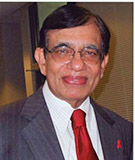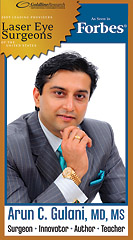
The ‘Not so Sweet’ facts about Sugar

We have been told over and over that we should cut down salt and saturated fats in our diet. Now, there is a new entry in that group. It is “sugar,” abundant in sweets and sodas. Don’t get me wrong, a certain amount of salt and sugar are absolutely necessary for the body’s metabolic needs, especially for energy utilization. But we tend to consume far in excess of our daily requirements.
It's well known that sugar has a direct link to heart disease. Metabolically, our bodies are equipped to take sugars and store them as energy in the form of fat. However, when the excess sugar calories aren’t used as energy shortly after you consume them, the amount of stored fat increases leading to obesity, high blood cholesterol, etc. If you’re carrying more weight than your heart is designed to carry, it will certainly have to work harder resulting in cardiac dysfunction. To make matters worse, all of that extra sugar in your system, coupled with the extra pounds, will lead to diabetes mellitus – another major risk factor for cardiovascular disease.
“Added sugars” (refined sugars or table sugar) seems to be the main culprit. This is what you add to your coffee and tea but it is also present in the many foods and beverages we consume daily. Indian sweets such as laddu and jelabi, cakes and cookies and corn syrup are loaded with this sugar. High fructose corn syrup, a major offender, is present in many products that we use, like sodas, candy bars, yogurt, white bread, salad dressings, fruit juices and more. The sugar in these products give you nothing but empty calories and hence unhealthy. There is also plenty of sugar hidden in commonly consumed foods like yogurt, peanut butter, juices, ketchup, pasta sauce, honey and energy drinks, just to mention a few. Lactose, the sugar naturally found in milk and dairy products, and fructose, the sugar that appears in fruit, don’t count.
Refined white sugar is an important cause of many health problems we face. “Even one teaspoon of white sugar is capable of reducing your immunity by over 50 percent for the next five hours!” according to one expert. Excess sugar that puts more calories in your body has been implicated in the production of diseases like: 1. Metabolic syndrome. 2. Diabetes Mellitus Type II. 3. Hypertension. 4. Obesity. 5. Heart disease. 6. Increased acid secretion in the stomach leading to peptic ulcers, etc.
The general consensus among the medical community is that Metabolic syndrome, a common problem among Indians, is one of the big predictors of heart disease. It is a cluster of medical conditions that include obesity, especially the abdominal kind (excess body fat around the waist), high blood pressure, and, more importantly, insulin resistance leading to diabetes. All these put a heavy strain on the body, increasing the risk for heart disease and stroke. And what causes Metabolic syndrome? Along with obesity and sedentary habits, excess sugar intake is a major culprit.
So, what’s the answer? The current dietary guidelines for Americans from American Medical Association recommend, “Limiting intake of added sugars to 10 percent of total daily calories.” The most important first step is to make a few lifestyle changes.
-
Start with cutting down on sugar that you add to coffee and tea, but also go easy on all the sugary sweets, candies, donuts, puddings, etc. White rice and potatoes, all purpose flour (enriched, bleached, etc.) are also full of carbohydrates leading to high blood sugar; so, reduce the intake of these foods.
-
Consume more whole grains and whole foods: Whole wheat, breads, oats, pastas, whole corn, wild rice or brown rice, quinoa, etc., are good. Eat cereals that do not contain added sugars.
-
Vegetables of all kinds, including sweet potatoes and yams, legumes like beans, lentils and peas are good for the body.
-
Beverages: Water to which you can add a small amount of fruit juice for flavor. Milk, no-fat soy milk, coffee and tea are okay. Alcohol, only in moderation.
-
Eat more fruits: Although fruits contain sugar (fructose and glucose), they also contain vitamins, antioxidants, water and fiber; hence, they are better than table sugar, candy and desserts. They can also reduce your cancer risk.
Learn how to spot added sugars in the foods you consume. Make it a habit to read the labels and start taking the right steps to maintain good health and prevent some of the common diseases.
M.P. Ravindra Nathan, M.D., is a cardiologist and Emeritus Editor of AAPI Journal. His book “Stories from My Heart” was recently released. (www.amazon.com or www.bn.com).
EYE CARE
LASIK Eye Surgery AND NY Times: OPEN your Eyes: What You Really Need to Know – PART I

In a very recent (June 11) New York Times article, LASIK surgery was highlighted for its complications.
Given that I repair complications for Lasik eye surgeons worldwide, I was asked by many to help explain the article and its impact on both, patients and Lasik surgeons alike.
So, as I was returning back after speaking at the World conference two weeks ago, I penned my thoughts on my long flight back home to give you the most current update on this surgery that is a household name and whose impact can be felt on someone in your home or next-door neighbor.
Due to the extent of knowledge I want to share, right from its inception to present-day success, I will divide the article into three parts: in part 1, I shall review its origin and success; part 2, its possible side effects and complications; and part 3, prevention of complications and future directions.
Nearly 30 years ago, I was privileged to have been exposed to Lasik eye surgery years before it was to be approved and used by eye surgeons in the United States. That involvement allowed me opportunities to lead by inventing Lasik surgery instruments (Gulani Lasik instruments; Bausch & Lomb) and establish protocols as well as work with the American National Standards Institute (ANSI) division of the U.S. FDA on various levels.
Having had exposure to nearly 20 different refractive surgeries (removal of glasses), it was clear to me that this surgery had a permanent future; in fact, a safer and more predictable one compared to previous and prevalent techniques then.
Having interacted with Dr. Jose Ingacio Barraquer (South America) and Dr. Slava Fyodorov (Russia), my passion in this direction was set as I looked to eventually take this already excellent surgery to a level of safety and predictability worthy of its 193- nanometer excimer laser.
Eye glasses, as we know from history, have been around since the 13th century in Italy, while one of the first contact lenses made from hand-blown glass came into existence in 1888 in Switzerland.
The quest though was on for a more permanent solution to eye glasses.
Dr. Srinivasan, a scientist working in IBM, introduced application of the excimer laser on organic tissue and from there on Dr. Stephen L. Trokel (Columbia University) applied it to perform laser vision correction until Dr. McDonald, first used it on a blind eye to perform PRK surgery.
Dr. Pallikaris (Greece), Dr. Burrato (Italy) and, Dr. Peyman (USA) in various levels participated in bringing forth an improvised version that would come to be known as LASIK (Laser Assisted In-Situ-Keratomileusis), which was first adapted by Canada and then by the U.S. FDA in 1995.
My own exposure and adaptation of Lasik among the first in the world allowed me to see that this surgery could practically correct all refractive errors, including nearsightedness, farsightedness, astigmatism and presbyopia. The professional satisfaction was further augmented by my patient’s reactions to the swift yet meticulously accurate surgical technique.
LASIK eye surgery involves the use of very precise (cuts 1/4th of a micron at every pulse) excimer laser, which re-shapes the cornea (clear front window) of the eye according to the glasses prescription of the patient.
The surgery is done in minutes, with the patient awake and active; only numbing drops are used in the patient’s eyes. The method provides quick healing and fast results. Visual recovery is swift. Most patients gain vision recovery within minutes to continue toward significant improvement the same day of surgery.
Having used practically every kind of Lasik laser globally allowed me to visualize a surgery that many eye surgeons could master.
LASIK surgery has since evolved into a “blade-free: technique and thereon into a “custom-designed” surgery until recent times where we have further propelled to a “no-cut” technique.
I do emphasize that Lasik is just one of 16 laser vision surgeries, which themselves are among 40 different vision corrective surgeries (to remove glasses and contact lenses).
Thus, if one understands how vision corrective surgery and 40 combinations are what all Lasik surgeons must be capable of performing and offering, it becomes easy to realize how every patient can have the best surgical technique tailored to them for the safest and most predictable outcome.
This would then change Lasik vision surgery from a commodity to an art. There was one fear though; this very asset of LASIK surgery, especially its speed and safety along with its predictability, could fall into wrong hands. More on that in the next column.
To be continued …
Arun C. Gulani, M.D., M.S., is director and chief surgeon of Gulani Vision Institute in Jacksonville. He can be reached at [email protected] or visit www.gulanivision.com